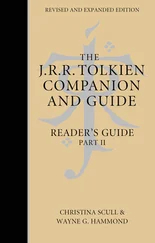Clearly the words of Isaiah 9:10 pertain to ancient Israel. But what if that same message or warning of judgment could be manifested elsewhere, to another nation that once knew God and had fallen away? Those words would become a harbinger of that country’s future, a sign that it is in danger of judgment and has now been given a warning and a call to return.
As The Harbinger illustrates, the same Nine Harbingers or signs of warning that appeared in ancient Israel before her destruction have now reappeared in America. Isaiah 9:10 is the key to all of them, unlocking each of their mysteries and joining them all together. Each of them is connected and, when joined to the other eight, forms an unmistakable prophetic message of divine warning before judgment.
The fallen bricks of ancient Israel
The breach and the terrorist are the first two harbingers and the context for the other seven. As we have seen, both of these harbingers reappeared in America on 9/11.
The Third Harbinger is found in the opening words of Isaiah 9:10: “The bricks have fallen.” These words state the obvious: Assyria had attacked Israel and wrought physical damage, as evidenced by heaps of fallen brick from collapsed structures.
But this leads us to questions arising from the first two harbingers: Why did God allow the breach in the first place? Why did He let the forces of Assyrian terror enter? Why was Israel’s hedge of protection removed, leaving it defenseless and leading to the damage that was now plainly visible through piles of bricks appearing where buildings once stood?
Seen in this way, the fallen bricks highlight the progression of God’s many warnings to the nation, first through the ancient choice of blessings or curses laid before Israel by Moses in Leviticus and Deuteronomy, next through the contemporary warnings uttered by Israel’s prophets, and finally through the breach in Israel’s defenses and the terrorist forces entering the land. It demanded from the people and their leaders an unequivocal response of repentance.
The fallen bricks of America
Has this Third Harbinger, like the first two, been manifested in America?
The answer is yes.
In the aftermath of the 9/11 attacks, there was no more visible or identifiable sign of what had happened than the surreal, haunting image at Ground Zero, several stories high, containing heaps of brick, all that was left of the twin towers of downtown Manhattan, the financial capital of the world and symbol of America’s unmatched economic and financial strength and dominance.
As with ancient Israel, the fallen bricks bear witness not only to literal damage but also to the first two harbingers of the breach and the terrorist, proclaiming a stark warning to a nation that had left its godly foundations and had resisted every prior entreaty to turn back to God.
As with Israel, the damage was limited; the judgment was not final. As with Israel, it was visible to all; a call to repentance was being made. As with Israel, America chose to reject the call and move on.
The Fourth Harbinger:
The Tower
The tower of ancient Israel
Taken together, the first three harbingers—the breach, the terrorist, and the bricks—tell the story of a nation that abandons its godly roots, leading to God’s removing His hedge of protection and blessing when all other warnings fail, resulting in a sudden but limited attack from a fierce enemy, triggering a vow to rebuild but not repent:
The bricks have fallen, but we will rebuild . . .
The Fourth Harbinger reveals a nation that not only neglects to repent but also openly embraces a spirit of defiance.
The bricks have fallen, but we will rebuild with hewn stone .
——ISAIAH 9:10
How is this defiance? The fallen bricks were made of clay and straw, but ancient Israel vowed to replace this material with something much stronger: hewn stone. It was a vow to come out of the attack stronger than before. Missing was even a hint of critical introspection leading to a change of heart toward God. Any new construction, therefore, would represent the nation’s defiance of God’s call.
A number of commentaries highlight the defiance shown through ancient Israel’s words.
It is the defiance of a people who, far from being repentant, glory in their iniquity. 4
To be heedless when God is speaking . . . is iniquitous enough, but to act in deliberate defiance . . . is, by many degrees, worse. 5
The American tower
Has this Fourth Harbinger, like the previous three, reappeared in America? It has.
In the days, months, and years after 9/11, three of the words from Isaiah 9:10, uttered by ancient Israel in response to the damage incurred by the Assyrian attack, were uttered repeatedly by American leaders—from governors to mayors to the president of the United States—in reply to the al Qaeda attack: “We will rebuild.”
Moreover, in virtually all of the speeches delivered on the subject by these leaders, they spoke of America’s determination to build bigger, better, and stronger than ever.
In addition, in many of the speeches uttered after 9/11, the word defiance was used in relation to the rebuilding. One example, from a senior US senator, is as follows:
[W]e should . . . rebuild the towers of the World Trade Center and show the world we are not afraid. We are defiant. 6
Finally, in the aftermath of 9/11, America settled upon the building of a structure at Ground Zero that would fully represent its aspirations in the rebuilding effort. It was the Freedom Tower.
From the tower of Babel in Genesis onward, towers in the Scriptures can represent the elevation of human pride over a spirit of humility and obedience to God. Moreover, an alternative rendering of Isaiah 9:10, coming from the Septuagint, a Greek translation of the Hebrew Scripture more than twenty centuries ago, is as follows:
The bricks have fallen down . . . but come . . . let us build for ourselves a tower .
Just as ancient Israel did, in the wake of the calamity America embarks on a campaign of rebuilding, to rebuild stronger than before on the ground of its fallen bricks. A tower rises from the ruins, a symbol of defiance.
The Fifth Harbinger:
The Gazit Stone
The Gazit Stone of Israel
The first part of Israel’s vow ends with the words hewn stone. In this lies the Fifth Harbinger. In the original Hebrew of the passage, the word is gazit . Besides “hewn stone,” it may also be translated as a carved or quarried stone, a stone quarried, chiseled, and carved out of mountain rock.
After the Assyrian attack of 732 BC, following the vow to rebuild, the people of Israel would go to the mountains and quarries to carve, shape, and smooth the Gazit Stone and bring it back to where the bricks had fallen and begin the rebuilding.
The significance of the Gazit Stone and the act of putting it in place of the fallen bricks has to do with the difference in the two objects. Clay brick was brittle, flimsy, weak, and easily destroyed, but hewn stone was not. It was thus a symbol of strength—and not only of strength but of greatness. With hewn stone the nation could build not only stronger than before but also bigger and higher. Again, it was not about restoration but defiance. For Israel, the Gazit Stone symbolized the nation’s hope of rebuilding itself stronger and greater than before. But in reality, it was the embodiment of their defiance and rejection of God’s calling.
The American Gazit Stone
Has this Fifth Harbinger—national defiance in the form of a stone— appeared in America like the prior four harbingers? Yes.
Читать дальше












